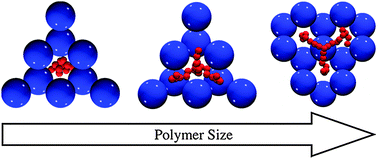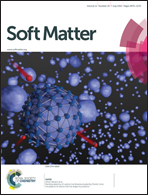Tuning polymer architecture to manipulate the relative stability of different colloid crystal morphologies
Abstract
Polymers dilutely adsorbed in colloidal crystals play an underappreciated role in determining the stability of the crystal phase. Recent work has shown that tailoring the size and shape of the adsorbing polymer can help tune the relative thermodynamic stability of the face-centered cubic (FCC) and hexagonal close-packed (HCP) polymorphs [N. A. Mahynski, A. Z. Panagiotopoulos, D. Meng, and S. K. Kumar, Nat. Commun., 2014, 5, 4472]. This is a consequence of how different polymorphs uniquely distribute their interstitial voids. By engineering an adsorbent's morphology to be complementary to the interstices in a desired crystal form, other competing forms may be thermodynamically suppressed. Previous investigations into this effect focused solely on linear polymers, while here we investigate the effects of more complex polymer architectures, namely that of star polymers. We find that even small perturbations to an adsorbing polymer's architecture lead to significant, qualitative changes in the relative stability of close-packed colloidal crystal polymorphs. In contrast to the linear homopolymer case, the FCC phase may be re-stabilized over the HCP with sufficiently large star polymers, and as a result, solvent quality may be used as a polymorphic “switch” between the two forms. This suggests that star polymers can be engineered to stabilize certain crystal phases at will using experimentally accessible parameters such as temperature.



 Please wait while we load your content...
Please wait while we load your content...